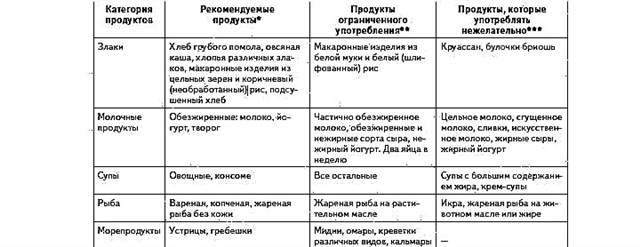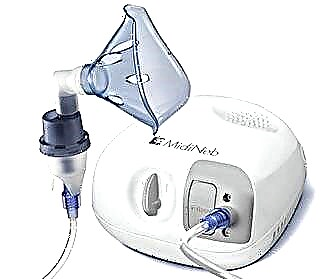A cough without fever in infants is not so rare. Firstly, such crumbs catch infections faster due to weak immunity. And secondly, in most cases, this cough has non-infectious causes and is due to the physiological characteristics of the baby. Therefore, it is not worth sounding the alarm immediately. Perhaps, after observing the child a little, it will be possible to establish and easily eliminate the cause of the cough without fever.
Possible reasons
 Any cough is a reflex reaction of the body to external or internal stimuli. Therefore, all the reasons for which it occurs can be divided into allergic, infectious and non-infectious. True, babies have one more feature - a physiological cough.
Any cough is a reflex reaction of the body to external or internal stimuli. Therefore, all the reasons for which it occurs can be divided into allergic, infectious and non-infectious. True, babies have one more feature - a physiological cough.
- A physiological cough is a baby's way to get rid of mucus accumulated in the nose and on the back wall of the larynx on his own. In newborns with a cough, the remnants of amniotic fluid or mucus come out of the birth canal. Children 1-6 months old get rid of mucus flowing down the throat in this way, if the mother does not remove it from the nasal passages in time. Therefore, if the baby “coughs” from time to time against the background of general good health, there is nothing to worry about. When he spends more time with his head upright, this cough will disappear.
- Allergic. It is part of a common allergic reaction to an irritant. Sometimes identifying an allergen is difficult. But the allergic cough itself is easily recognizable. It is usually accompanied by profuse expectoration, swelling, shortness of breath, wheezing, crying. Sometimes you notice redness of the skin and even rashes. Such a cough is easily relieved with antihistamines, and an allergist can help to find the source of the problem.
- Infectious cough. It occurs due to irritation and inflammation of the throat, into which the infection has entered. Moreover, some of its types in the early days do not cause a sharp increase in temperature and are disguised as a cold. But if, after 2-3 days of home treatment, the cough intensifies, yellow snot appears, or the temperature finally rises, a doctor's consultation is necessary.
All other causes of cough can be attributed to non-infectious. This is dust and foreign bodies trapped in the throat, hypothermia, strong odors, smoke, chemical irritants. This also includes the so-called heart cough and bronchial asthma. In this case, the treatment is symptomatic, since it is impossible to remove such a cough without eliminating the cause itself.
Treatment features
 Treatment for infants has many features. Most of the medicines and procedures commonly used for adults and even preschool children are not suitable for them. Therefore, you cannot do without the help of a doctor. But if the cough is strong, then before his arrival it is necessary to relieve the attack and do everything to alleviate the child's condition as much as possible.
Treatment for infants has many features. Most of the medicines and procedures commonly used for adults and even preschool children are not suitable for them. Therefore, you cannot do without the help of a doctor. But if the cough is strong, then before his arrival it is necessary to relieve the attack and do everything to alleviate the child's condition as much as possible.
First of all, you need to try to put the baby to bed and provide him with maximum peace. If he is capricious, find a quiet joint activity: read a book, draw, sing him a lullaby. Then you need to act according to the situation.
Here's what you can do yourself at home:
- Warm drink. Helpful for any type of cough. It warms the throat, dilates the bronchi, makes breathing easier, and flushes mucus, if any. You can give warm boiled water with honey. And you can use weak decoctions of herbs: chamomile, elecampane, sage, coltsfoot.
- Cleansing the nose. It is precisely cleansing, not rinsing. Incorrectly performed washing in infants can add otitis media to the main diagnosis - inflammation of the middle ear, into which, through a very short Eustachian tube, bacteria-infected mucus from the nose will enter under the pressure of water. It is better to drip the nose with saline, and when the mucus becomes liquid, draw it out with an aspirator.
- Instillation of the nose. For the treatment of infants, vasoconstrictor drugs are not used! You can drip your baby's nose with fresh beetroot juice, aloe or Kalanchoe juice, diluted in half with water. After the Kalanchoe, the child will begin to actively sneeze, so it is better to pick him up or put him in the crib.
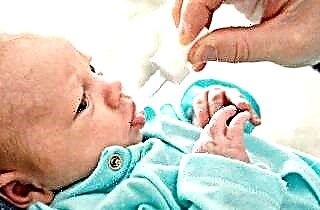 Antihistamines. They are able to stop not only allergic cough. They eliminate laryngeal edema, relieve spasms and reduce mucus production. For babies, there are special syrups, for example "Diazolin", which have a sweet taste and act quickly enough. But we must remember that this is a temporary measure and you can constantly take such funds only as prescribed by a doctor.
Antihistamines. They are able to stop not only allergic cough. They eliminate laryngeal edema, relieve spasms and reduce mucus production. For babies, there are special syrups, for example "Diazolin", which have a sweet taste and act quickly enough. But we must remember that this is a temporary measure and you can constantly take such funds only as prescribed by a doctor.- Antitussives. Antitussives can be given to the baby only if the cough is very dry, literally reaching the point of vomiting. If you are mistaken and there is mucus in the bronchi, then such agents can cause bronchostasis, and then bronchitis or pneumonia. Therefore, it is better not to risk it, but to wait for a doctor.
- Expectorants. The use of expectorants is not so dangerous. Therefore, a child with a wet cough can be helped to remove phlegm with drugs "Lazolvan", "Ambroxol", "Stopussin". The dosage must strictly correspond to that prescribed in the instructions.
Important! No antibiotics until a doctor arrives! Only a qualified pediatrician can prescribe such drugs to an infant, especially since their dosage must be accurately calculated. Otherwise, very often there are serious side effects that may not appear immediately (severe allergies, hearing impairment, etc.).
Physiotherapy
When a baby has a cough without a fever, drug treatment is well complemented by the simplest physiotherapy procedures. But even they are better to agree with the doctor, since there are a number of contraindications that must be taken into account.
 For example, children under one year old are not given inhalation with a wet cough - they can provoke suffocation. Rubbing with vodka can cause severe skin irritation.
For example, children under one year old are not given inhalation with a wet cough - they can provoke suffocation. Rubbing with vodka can cause severe skin irritation.
The most affordable procedures that are easy to organize at home are:
- Warming compress. Helps with bronchospasm, severe barking cough, chronic bronchitis, colds, pharyngitis, laryngotracheitis. With a deep cough, it is applied to the chest area, with inflammation of the upper respiratory tract - on the neck. You can make a compress from warm mashed potatoes with the addition of a teaspoon of mustard powder or by mixing equal amounts of honey, propolis tincture and sunflower oil. Insulate the compress with a terry towel and keep for up to 2 hours.
- Honey cake. An excellent remedy for a deep cough, which makes it easier to pass phlegm, relieves inflammation and even strengthens the immune system. For her, you will need one spoonful of honey, onion juice, sea buckthorn oil and a few drops of eucalyptus. Move all liquid components, and then add flour so that a soft dough is obtained. Put the cake on a naked body, cover with cellophane, a warm scarf and wrap the child with a blanket. Can be placed during daytime sleep. It is not recommended in the evening, as sputum may begin to pass actively and the baby will not be able to sleep.
- Rubbing with camphor oil. A very useful procedure that combines heating, inhalation and light massage. Helps with all types of coughs and even relieves bronchial asthma as it dilates the bronchi well and relieves spasms. Before the procedure, slightly warm the camphor oil, apply to the chest and spread it evenly over the skin with light stroking movements (do not rub!). It is useful to do this rubbing at night - it will provide a deep and restful sleep.But you need to make sure that the baby does not sweat and then does not cool down, so you should not cover him too warmly after the procedure.
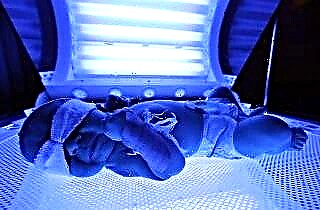 Warming up with a blue lamp. A simple, effective and affordable method to get rid of a severe cough. Blue light directs a certain wavelength, which has a calming effect and is able to penetrate into the deep layers of the skin. Soft dry heat activates blood circulation, relieves inflammation and pain, and makes breathing easier. The duration of the procedure is 5-10 minutes. Usually the baby falls asleep during it, so the time before bed is a good time.
Warming up with a blue lamp. A simple, effective and affordable method to get rid of a severe cough. Blue light directs a certain wavelength, which has a calming effect and is able to penetrate into the deep layers of the skin. Soft dry heat activates blood circulation, relieves inflammation and pain, and makes breathing easier. The duration of the procedure is 5-10 minutes. Usually the baby falls asleep during it, so the time before bed is a good time.- Salt bags. Another great deep heating method. Salt keeps warm for a long time, so the procedure can take up to 20 minutes. In case of bronchitis, the bags are placed on the baby's chest, in case of pneumonia, on the back, avoiding the area of the heart and spine. Used sea or ordinary rock salt, poured into small linen bags, which can be heated in a pan or microwave.
If the child is in the hospital or it is possible to take him to the clinic, the doctor may prescribe electrical procedures, the intensity of which is several times higher. It can be electrophoresis, UHF, laser heating, paraffin therapy or mud therapy.
In any case, the use of physiotherapy procedures activates the internal resources of the body and significantly speeds up the healing process.
Baby massage
Massage is especially useful for coughs. In general, massage for infants should be done regularly. The kid, who is still unable to move independently and is forced to spend most of the time in a supine position, really needs to stretch his muscles, stroke his skin, and make his joints work. Usually the child likes this procedure very much, and he accepts it with pleasure.
 It was noticed that children to whom mothers regularly performed massage, without even knowing all its subtleties, began to crawl and walk much earlier than their peers, who were deprived of such pleasure for some reason. Plus, it is great for strengthening the emotional bond between mother and baby, creating a positive and trusting atmosphere.
It was noticed that children to whom mothers regularly performed massage, without even knowing all its subtleties, began to crawl and walk much earlier than their peers, who were deprived of such pleasure for some reason. Plus, it is great for strengthening the emotional bond between mother and baby, creating a positive and trusting atmosphere.
Drainage massage helps to quickly get rid of accumulated mucus. But we strongly do not recommend doing it for babies on their own. Too much or improperly performed a procedure can cause lumps of mucus to enter the throat and block the larynx. It is better to invite a specialist for these purposes.
But a general strengthening massage for a baby can be done at home. A detailed description of its technique can be easily found on the Internet. It consists of stroking, rubbing, patting and vibrating movements. After the massage, the child's blood circulation improves, the mood rises, the immune system is strengthened, which also speeds up recovery.
Prophylaxis
By taking simple preventive measures and providing proper care for the baby, you can prevent the appearance of a cough, and if it does appear, speed up the healing process as much as possible.
- Examine the room carefully for the presence of possible allergens. Remove from it all household chemicals, flowers with a strong smell, limit contact with pets.
- Try to buy linen and clothes only from natural materials, without intense chemical dyes, avoiding too fluffy fabrics.
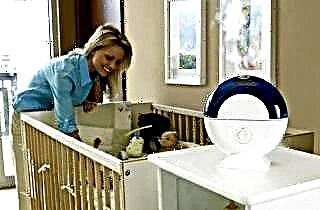 Ventilate the child's room regularly to provide fresh air. If an air conditioner is installed in the room, clean it and prevent mold at least twice a year.
Ventilate the child's room regularly to provide fresh air. If an air conditioner is installed in the room, clean it and prevent mold at least twice a year.- Monitor air temperature and humidity. If necessary, install a humidifier, or better an air ionizer.
- Do not give your child toys with small parts and such that he can easily break or gnaw. Do not leave an awake baby unattended.
- During walks, which should be daily, try to dress the baby for the weather so that he does not freeze or overheat.
- The most beneficial is breastfeeding. With mother's milk, the baby also receives ready-made antibodies that protect him from diseases. But if this type of nutrition is not available, modern, high-quality formula can be a substitute for breast milk.
And most importantly, never self-medicate. It is difficult to make an accurate diagnosis of a baby even for a pediatrician - there are too many features of individual development at this age.
Therefore, if the baby is coughing and does not have a fever for more than 3-4 days, consult a doctor. It is better to play it safe at the very beginning than to treat a serious and neglected disease for a long time.

 Antihistamines. They are able to stop not only allergic cough. They eliminate laryngeal edema, relieve spasms and reduce mucus production. For babies, there are special syrups, for example "Diazolin", which have a sweet taste and act quickly enough. But we must remember that this is a temporary measure and you can constantly take such funds only as prescribed by a doctor.
Antihistamines. They are able to stop not only allergic cough. They eliminate laryngeal edema, relieve spasms and reduce mucus production. For babies, there are special syrups, for example "Diazolin", which have a sweet taste and act quickly enough. But we must remember that this is a temporary measure and you can constantly take such funds only as prescribed by a doctor. Warming up with a blue lamp. A simple, effective and affordable method to get rid of a severe cough. Blue light directs a certain wavelength, which has a calming effect and is able to penetrate into the deep layers of the skin. Soft dry heat activates blood circulation, relieves inflammation and pain, and makes breathing easier. The duration of the procedure is 5-10 minutes. Usually the baby falls asleep during it, so the time before bed is a good time.
Warming up with a blue lamp. A simple, effective and affordable method to get rid of a severe cough. Blue light directs a certain wavelength, which has a calming effect and is able to penetrate into the deep layers of the skin. Soft dry heat activates blood circulation, relieves inflammation and pain, and makes breathing easier. The duration of the procedure is 5-10 minutes. Usually the baby falls asleep during it, so the time before bed is a good time. Ventilate the child's room regularly to provide fresh air. If an air conditioner is installed in the room, clean it and prevent mold at least twice a year.
Ventilate the child's room regularly to provide fresh air. If an air conditioner is installed in the room, clean it and prevent mold at least twice a year.
